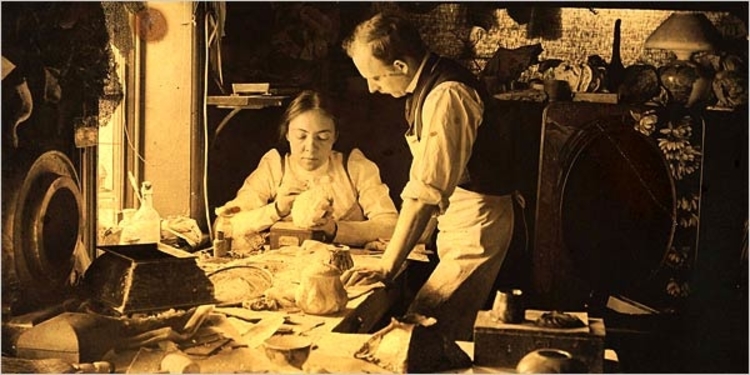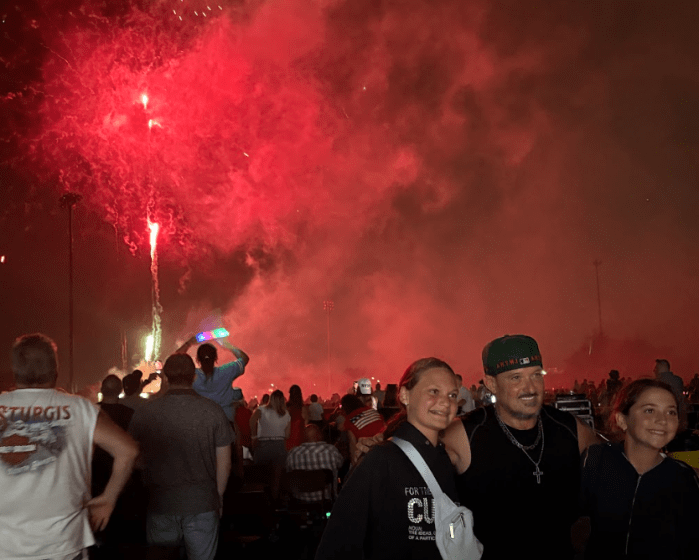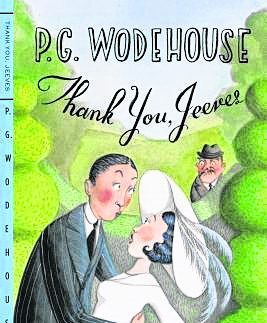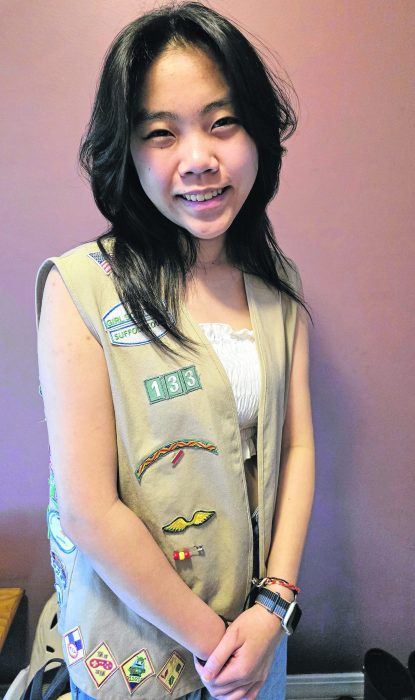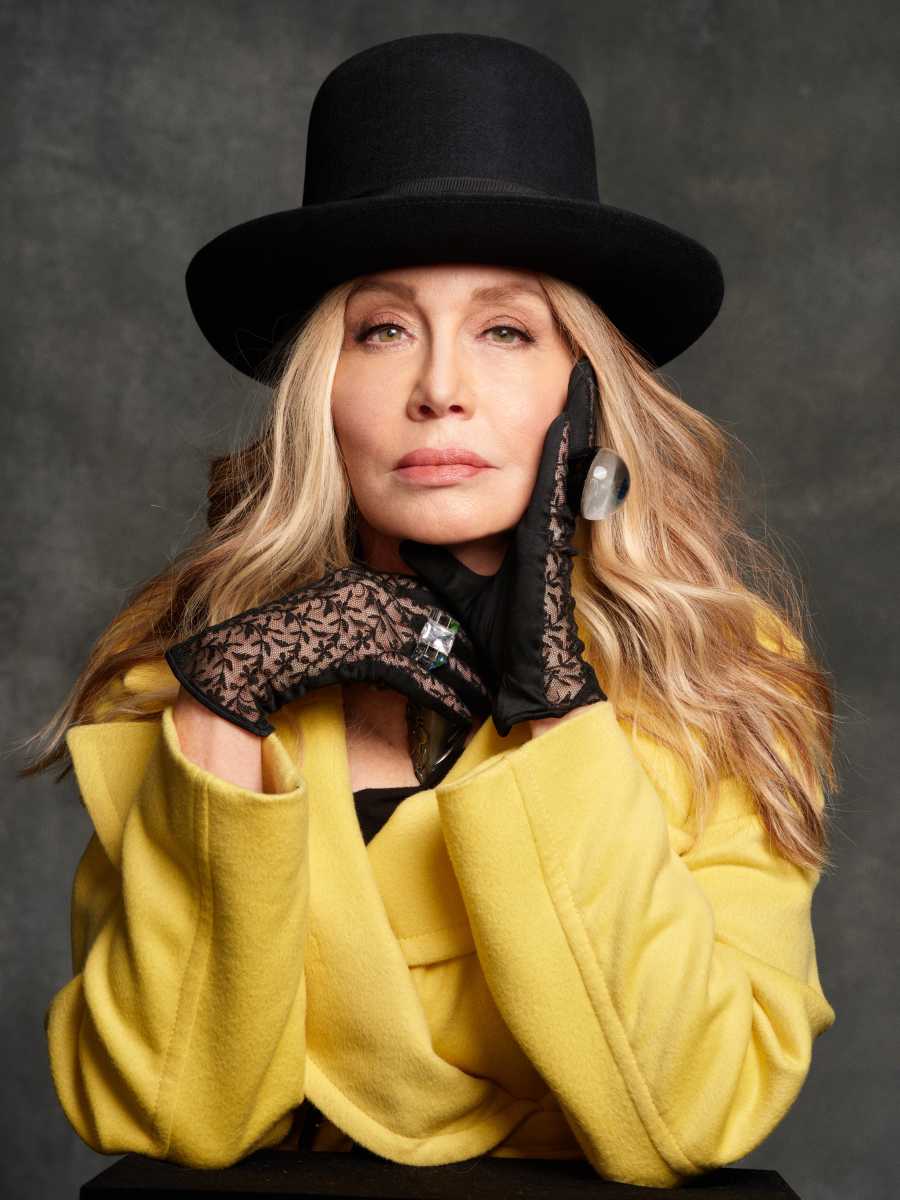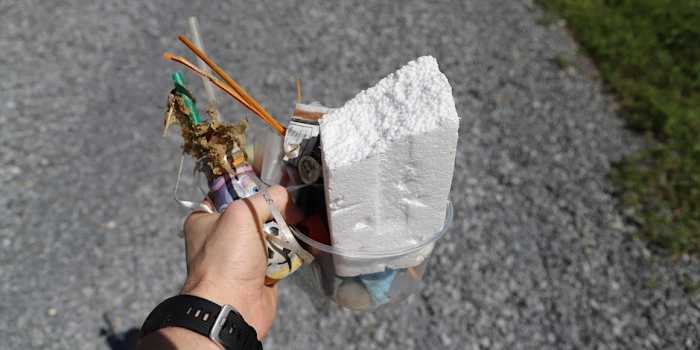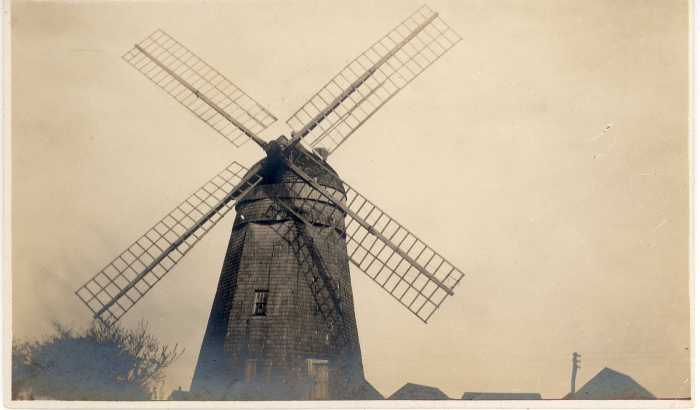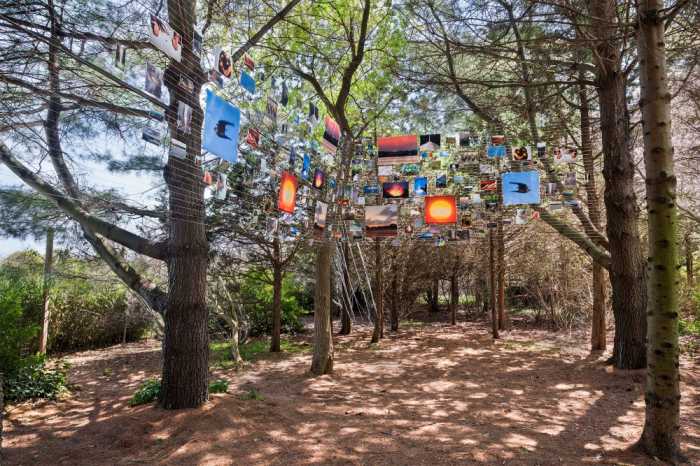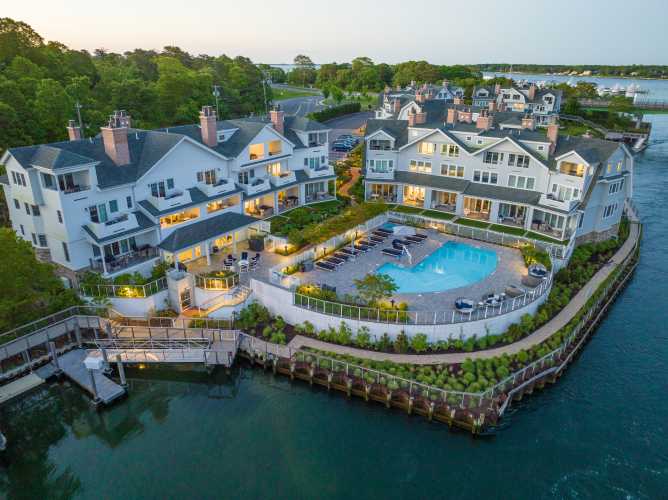Today, exquisite, instantly recognizable Tiffany lamps and other stained-glass art nouveau masterpieces fetch hundreds of thousands at auction. Louis Comfort Tiffany originally claimed credit, but many works were actually created by female artists led by head designer Clara Driscoll.
She was one of the few employees invited to Tiffany’s sumptuous Laurel Hollow estate on Long Island, Laurelton Hall. He was particular about the pieces produced for Tiffany Studios, hiring only the most talented artisans. Why did Clara Driscoll become his foremost artist?
A 2,000-PIECE LAMP
Born in Tallmadge, Ohio in 1861, Driscoll was raised by her widowed single mother who defied popular thinking and encouraged her daughter to move to New York to enroll at the Metropolitan Museum of Art School, at a time when women working outside the home was frowned on. Her artistry became evident by 1888, when she was hired by the Tiffany factory in Corona, Queens.
Tiffany, the son of famed jeweler Charles Lewis Tiffany, was a nomadic painter who devised glass formulas. From his renderings of outdoor scenery, he designed bronzes, enamels, ceramics, and jewelry — but it was through stained-glass pieces for his decorating business that his true vision shone.
In 1892, Driscoll was named supervisor of the Women’s Glass Cutting Department, known as the “Tiffany Girls.” For the first time, women were allowed to cut out patterns and select glass for windows and mosaics; by 1897, about 40 of the most skilled female artisans were creating meticulous preparatory drawings known as cartoons. There was constant turnover, because the department would not employ married women.
Proud of her work, Driscoll wrote in an 1899 letter to her family, “There are three hundred square feet of small pieces of glass to be accomplished. There is nothing like having enough work to do and feeling able to do so.” That year, Tiffany sold the first electric lamp with a stained-glass base and shade. The lamps became coveted collectors’ items.
It was the women artists’ idea to make lamp shades from pieces of glass left over from window manufacturing. In 1900, Tiffany Studios’ Dragonfly lampshade, Driscoll’s design, earned a bronze medal at the Paris world’s fair. But in company literature, Tiffany credited only himself.
We know this because surviving along with painterly glass artifacts are thousands of Driscoll’s letters detailing her creations and those of her staff. The letters discovered in the early 2000s at the Queens Historical Society described Driscoll’s Gilded Age life: She lived in a Manhattan boarding house, rode her bicycle, and shopped at Lord & Taylor and Wanamaker’s, as electricity lit the city and the new subway rumbled underground. Her letters also contained sketches, designs for which she would not get credit, including the magnificent 2,000-piece Wisteria Lamp inspired by the lush lavender-hued plants cascading atop the pergola at Tiffany’s Long Island estate.
LONG ISLAND SHANGRI-LA
Echoing the pervasive belief of the art nouveau period, Tiffany said that women possessed a “natural decorative taste” and “keen perception of color.” He encouraged Driscoll’s creativity and sought her collaboration. During her 20 years in Tiffany’s employ, she was given more responsibility, an increased budget, considerable artistic freedom — and invitations to his palatial estate on the site of the once-popular Laurelton Hotel resort. On one visit, she was summoned to Tiffany’s bedside while he was ill to discuss the house’s Four Seasons window. She wrote in March 1906 of wearing her “fine new dress” to Sunday dinner at Laurelton.
And what an estate Laurelton was. Tiffany’s vision of Xanadu incorporated Turkish, Moorish, and Persian design throughout the eight-level, 84-room house on 580 acres overlooking Cold Spring Harbor. Stately peacocks roamed the terraced gardens near a chapel, stables, art gallery, studio, conservatories, greenhouses, museum, and railway station. Inspiration abounded for Driscoll amid woodlands, apple orchards, and wildflowers. Inside, calla lilies and floating lotuses (a co-worker called them “part of the exotic, garish decor”) graced an octagonal stone pool; rotating watercolor-hued lights illuminated tall iridescent Favrile glass vase fountains; a leaded-glass dome cast an amethyst hue upon the court; and so on.
GLASS OUTLIVES SILK
Driscoll made Tiffany famous by designing inkwells, tea screens, mosaic desk sets, and at least 30 lamps, and most likely originated the concept of kerosene- and electric-powered lamps of leaded glass.
After marrying and leaving Tiffany Studios in 1909, she turned to designing hand-painted gossamer silk scarves; none survived. Many Tiffany windows are still intact, illuminating several Long Island churches. He died in 1933 and she in 1944, before Laurelton Hall was largely destroyed by fire in 1957, when firefighters battling the blaze had to smash its stained-glass windows.
For more Rear View columns on Long Island history, visit longislandpress.com/category/past-present/rear-view
Sign up for Long Island Press’ email newsletters here. Sign up for home delivery of Long Island Press here. Sign up for discounts by becoming a Long Island Press community partner here.




